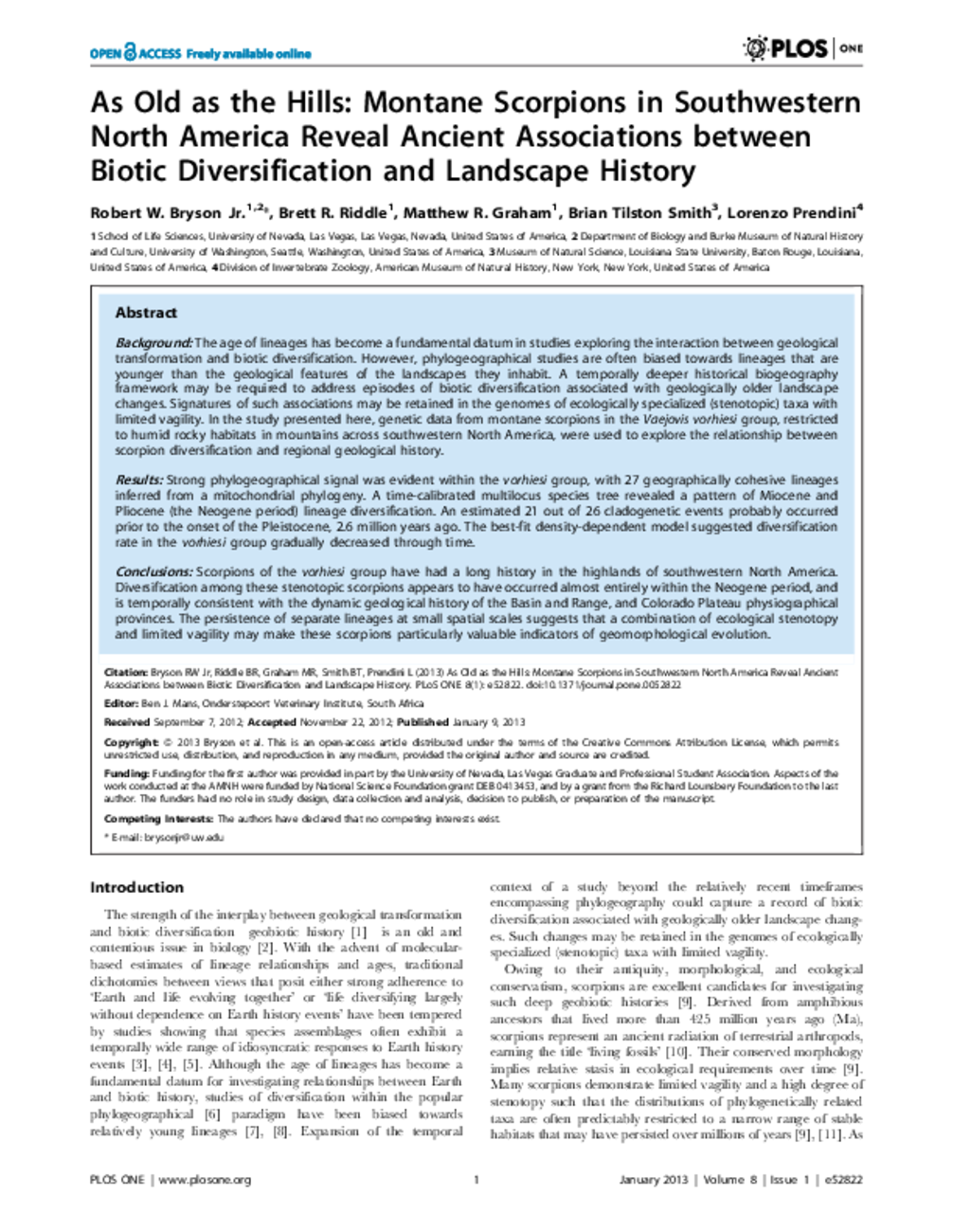As Old as the Hills: Montane Scorpions in Southwestern North America Reveal Ancient Associations between Biotic Diversification and Landscape History
Background: The age of lineages has become a fundamental datum in studies exploring the interaction between geological transformation and biotic diversification. However, phylogeographical studies are often biased towards lineages that are younger than the geological features of the landscapes they inhabit. A temporally deeper historical biogeography framework may be required to address episodes of biotic diversification associated with geologically older landscape changes. Signatures of such associations may be retained in the genomes of ecologically specialized (stenotopic) taxa with limited vagility. In the study presented here, genetic data from montane scorpions in the Vaejovis vorhiesi group, restricted to humid rocky habitats in mountains across southwestern North America, were used to explore the relationship between scorpion diversification and regional geological history.
Results: Strong phylogeographical signal was evident within the vorhiesi group, with 27 geographically cohesive lineages inferred from a mitochondrial phylogeny. A time-calibrated multilocus species tree revealed a pattern of Miocene and Pliocene (the Neogene period) lineage diversification. An estimated 21 out of 26 cladogenetic events probably occurred prior to the onset of the Pleistocene, 2.6 million years ago. The best-fit density-dependent model suggested diversification rate in the vorhiesi group gradually decreased through time.
Conclusions: Scorpions of the vorhiesi group have had a long history in the highlands of southwestern North America. Diversification among these stenotopic scorpions appears to have occurred almost entirely within the Neogene period, and is temporally consistent with the dynamic geological history of the Basin and Range, and Colorado Plateau physiographical provinces. The persistence of separate lineages at small spatial scales suggests that a combination of ecological stenotopy and limited vagility may make these scorpions particularly valuable indicators of geomorphological evolution.

